#of them fantasy ethnicities white authors make for their YA novels that are SWANA-inspired but they won't fucking bother doing their
Explore tagged Tumblr posts
Text
(ran this reblog through a discussion with some people who have more experience in storytelling/gamedev than i do and some who are central asian indigenous [which i'm not] to get their point of view on the Kin so it's probably going to be long because I'm condensing multiple discussion pieces in one, it's gonna be one of them Long Posts)
while the Kin is obviously heavily inspired by the Buryat, including in its language which does contain a lot of Buryat words, but also a lot of not-Buryat words (Yargachin, pointedly incredibly important in the game, is Mongolian directly. as stated above, Yas & Merdrel are also Mongolian), I do not know if I agree that finding the other inspirations is "forgetting that and trying to match them to other cultures". The Kin is not "its own somewhat distinct culture", it is its own, imagined, invented, imaginary culture, which takes inspiration from (/plainly steals) from existing ones. It is an imaginary people with heavy foundational roots, in the same way the town is imaginary with heavy foundational roots, and the disease itself is imaginary with heavy foundational roots. It is obvious the game takes inspiration from the Buryats (and from others), but it also, in the name of storytelling, creates a religion which is almost an inverse of Buryat Tengrism (Tengrism, with Kyuk-Tengri, father-sky-god as head of the pantheon, being, from what i'm understanding, pantheistic [the Main God is in everything, and everything is a manifestation of him], polytheistic [while Tengri is the main one, there is a heap of other gods, goddesses and spirits under/around him, with great importance placed on those spirits [44/55 associated with different things]], and of course with a main head of a father-sky-god; whereas the Kin's religion, with Boddho, a mother-earth-goddess* [whose name seems to relate more to Mongolian], is pantheistic [mother Boddho is in everything and everything is a manifestation of her], monotheistic [she is the only one, the all-mother, all-creatoress] OR duotheistic [her + Bos Turokh are the only deities], and lacking in spirits entirely, which are so important to Tengrism), has an important spiritual caste of women (the Herb Brides) who have no resonance within Altaic/Mongolic/Turkic cultures because no culture has Naked, Dancing Young Pretty Women Whose Sole Job is Dancing For Harvest (some types of goddess-priestesses / witches / oracles have always existed, but the Herb Brides are a distinct, obvious invention, which deserves scruteny. you could argue that they correlates with shamans, but in the text it appears evident that is more the place of Burakh [father, then son], and the Herb Brides directly go against a widespread shamanic practice which is the wearing of many layers made of animal skins, bones, antlers, horns in order to disguise oneself, to wander between worlds, to trick the tricksters, etc), and also like. Worms. "crude", "unfinished". half-man half-dirt.
*the cult of an earth-mother/mother-earth exists in Buryat Tengrism with Umai, because earth-goddesses exist/have existed in most pantheons, especially before the advent of pastoralism; however, she is daughter of Tengri, whereas Boddho is all-mother. Mongolian Tengrism has her be named Etugen, and while she is said to have all control over the natural forces and all living forces be subordinate to her, Kyuk-Tengri is still "above" her, she is the "second highest" after him. the existence of a earth-goddess within two religions does not make them more similar than any others (the Greeks had an earth-goddess, Demeter, with theories that she was there before the advent of the hellenic pantheon as an all-mother... etc etc so on). there is also sources stating that at some point, Tengrist or proto-Tengrist peoples might have worshiped him/a sky-father exclusively or so majoritaly that the other deities were aside, but it could also come from biased or outside sources.
we are also unsure about your claim that the Kin represents the Buryats in "interesting and careful" ways. We do not know of your position wrt indigenity (and it's none of my business specifically, might be the business of those in the group who are indigenous but i'll let them decide if they want to contact you directly) and if you were doing research on the Buryats out of a reconnecting journey or intellectual curiosity/desire and personally feel that the Buryats are respectfully represented in P2 as one, but I have read many other Central Asian Indigenous people in this fandom write, since the release of P2 (and possibly before that about P1, as well as in the discussion we were Just Having about this ^) about how the Kin does not represent them faithfully, or even sometimes just kindly, and the treatment of it and its members being insulting in multiple ways (including the fact that their beliefs and language are a hodgepodge of languages and beliefs that feels to "steal" from multiple sources [=appropriative instead of appreciative] which itself is another discussion, do not represent any real-life religion while obviously being inspired by some, and on other levels just the fact that the Kin's clothes do not resemble the vibrant, intricate, and historically-significant clothing of the Buryats, or any of the peoples they are inspired by. That and the fact that they literally have non-human/in text sub-human members [the Worms]). Most of the discussions around the Kin that i've seen, from Central Asian Indigenous people, recognizes and celebrates the inspirations (plural) while still interrogating how callous, cruel, sexualizing and misogynistic the narrative and metanarrative treatment of the Kin is, a far cry from a "careful and interesting way" of representing the Buryats (or any of the other inspirations).
last thing: I am personally curious as to where/how you've found the "half Chinese" data piece, because I have not been able to find anything of the sort online (doesn't help that my grasp on Russian is nonexistent). I have seen it going around, without a source, and I also have seen (in the tags of this) the data of "1/16 Manchu or Han", which is a far cry from "half-" anything, and not related to Shenekhen Buryats. [deleted the rest to add:]
Dybowski, from his own mouth, is not half-chinese, and the tagger who mentioned it being 1/16 was right: on page 57 of [this interview], he mentions his grandfather's father (so great-grandfather) having married a Chinese woman (when he was 60 and her 20, but that's a whoooole other story), making him 1/16 chinese (possibly Han or Manchu as the tagger mentioned). I do not doubt this informs his view of the world and how he is treated, even if he mentions being "the only one in [his] family who really looks Russian", but it is a far-cry from "half-" anything. that does not change the general discussion i've read for years at this point around the Kin, which is that the inspirations are obvious and should be celebrated, but it is obviously imaginary/invented, and in the hazy lines of imagination lies a treatment of the Kin which is cruel, crude, sexist (more specifically misogynistic), often racist and feels more like appropriation for a morally gray ethnicity that pays lip-service to its inspiration but mistreats it nonetheless rather than full, hearty representation.
great discussion! 👍🫂 i'm genuinely glad we can exchange on this. but what is contained in your reblog is, from what i've seen and read, pretty far from the consensus on the Kin. we all can recognize (and we should appreciate and take good care in handling) the real-life inspirations while still seeing that, in the blurry lines of storytelling and "invention" for the sake of (technically) a ~fantasy~ ethnicity, lies like. a racist mistreatment with appropriative qualities. which i've seen people talk about for years at this point.
the pathologic Kin is largely fictionalized with a created language that takes from multiple sources to be its own, a cosmogony & spirituality that does not correlate to the faiths (mostly Tengrist & Buddhist) practiced by the peoples it takes inspirations from, has customs, mores and roles invented for the purposes of the game, and even just a style of dress that does not resemble any of these peoples', but it is fascinating looking into specifically to me the sigils and see where they come from... watch this:
P2 Layers glyphs take from the mongolian script:

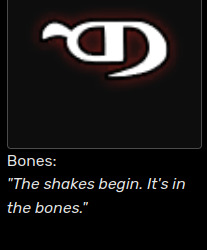

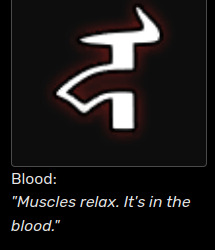

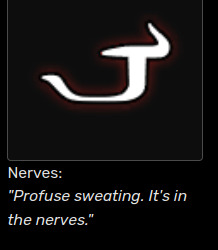

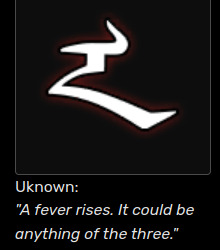
while the in-game words for Blood, Bones and Nerves are mongolian directly, it is interesting to note that their glyphs do not have a phonetic affiliation to the words (ex. the "Yas" layer of Bones having for glyph the equivalent of the letter F, the "Medrel" layer of Nerves having a glyph the equivalent of the letter È,...)
the leatherworks on the Kayura models', with their uses of angles and extending lines, remind me of the Phags Pa Script (used for Tibetan, Mongolian, Chineses, Uyghur language, and others)
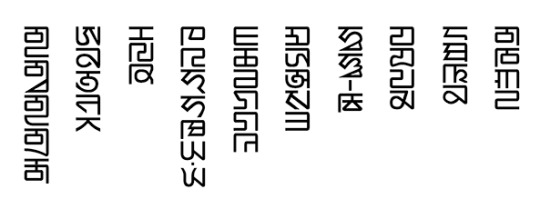

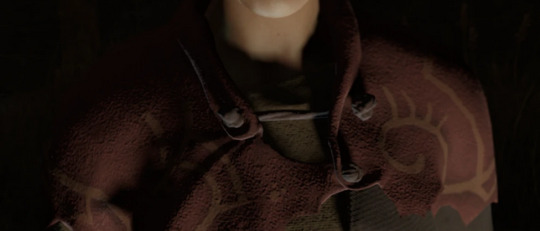
some of the sigils also look either in part or fully inspired by Phags Pa script letters...



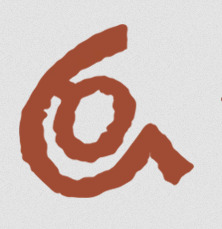


some look closer to the mongolian or vagindra (buryat) script

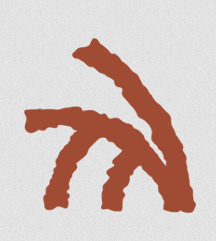
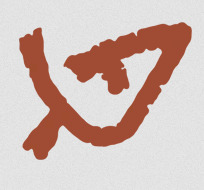

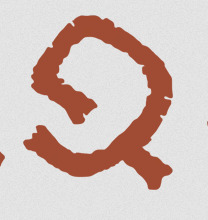
looking at the Herb Brides & their concept art, we can see bodypainting that looks like vertical buryat or mongolian script (oh hi (crossed out: Mark) Phags Pa script):
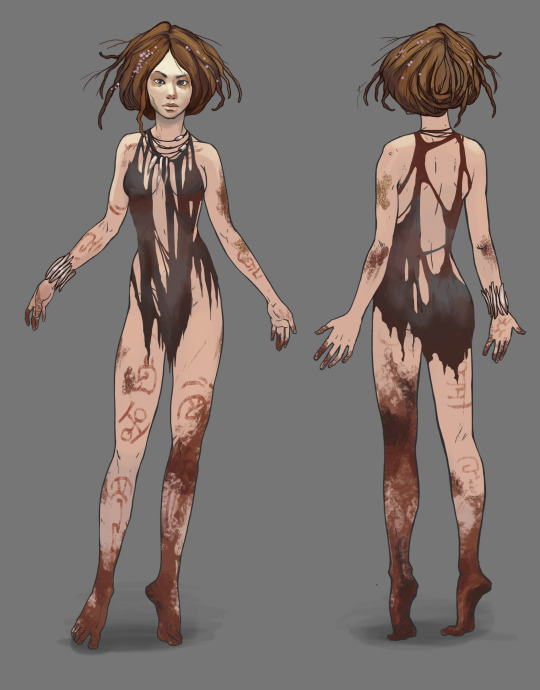
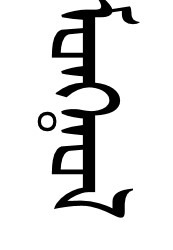

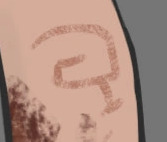

shaped and reshaped...
#i brought it up in the gc because it was my impression and i wanted to check in with people who have been here longer than me + are also#more impacted than me but i've always seen the discussion around the Kin to be like ''yeah [x] is obvi inspired by [ethnicity]; [y] is#obviously inspired by [ethnicity]; but [z] is hogwash hodgepodge and [ethnicity] doesn't do that and [a] is hogwash hodgepodge [...]''#like i will not lie to you. i have not seen an indigenous person in this fandom truly believe that the Kin is in any way respectful/careful#to any culture it is inspired by. but then again 1) love to hear dissident opinions; that's what Discussion is for and 2) maybe i just#haven't looked far enough! that's perfectly possible!#i've seen (& continue seeing) people recognize and appreciate the bits and pieces of the Kin that Do have obvious correlations [the Buryat#belief of the Earth needn't be cut+needing ask for permission to dig; the Trials of p1 which i've seen native american people relate to;...#but like. ''yeah it's careful/respectful'' has never been a sentence i ever come across about the Kin. won't lie.#like for every post i read about how the Kin is a respectful homage to [ethnicity] i read 2 to 4 abt how it's a disrespectful sexualizing#hodgepodge of (sometimes unrelated) sets of beliefs and mores that the game both wants you to interact with as a narratively-understood#racism problem in-game & Also is racist itself and lacks so many distinctive qualities of [ethnicity] to the point it feels just like ''one#of them fantasy ethnicities white authors make for their YA novels that are SWANA-inspired but they won't fucking bother doing their#research on which one they want to appropriate'' - GC message [permission to share]#like i am but the messenger on this [because again. not CA indigenous. but i know people who are and i read things by people who are#and i've run this reblog through people who are etc] but most of the discussion around the Kin does Naht go in the sense of#''it's a careful and interesting [way of handling the Buryats/Mongols/...]''. most people i've read talk about it#are somewhat pissed lol. which again. it's perfectly normallll to have dissident opinions. in the Perspective game.#tldr; imaginary and imagined people with obvious and very clear inspirations but in the blurry edges in the ''imagination'' & ''invention''#lies some disturbing racist/misogynistic/appropriative shit; which lead writer D.; even if half-chinese or 1/16 Han or Manchu*;#[ETA: 1/16 was right] still can fuck it up big big time.#also considering his Allegations towards women and girls everyone can side-eye his treatment of the Herb Brides; regardless of if we think#that's a ''respectful'' invention based on RL ethnicities#neigh (blabbers)#anyways. genuinely good discussions to have and partake in; even if it's obviously different visions on the matter.#i'm also really attached to like. creating fantasy ethnicities for storytelling but like all storytellers you haaaaave you have to do your#research to handle the ethnicities you're ''basing yourself on'' properly.#the whole argument here [which other people have more eloquantly/personally described than I] is that the Kin is both different enough#from its inspirations [completely different dress; different spiritual castes and practices; a religion that is almost the complete inverse#of buryat tengrism; the herb brides; the worms;...] but also Similar Enough that we have to consider like. both parts of the equation
305 notes
·
View notes